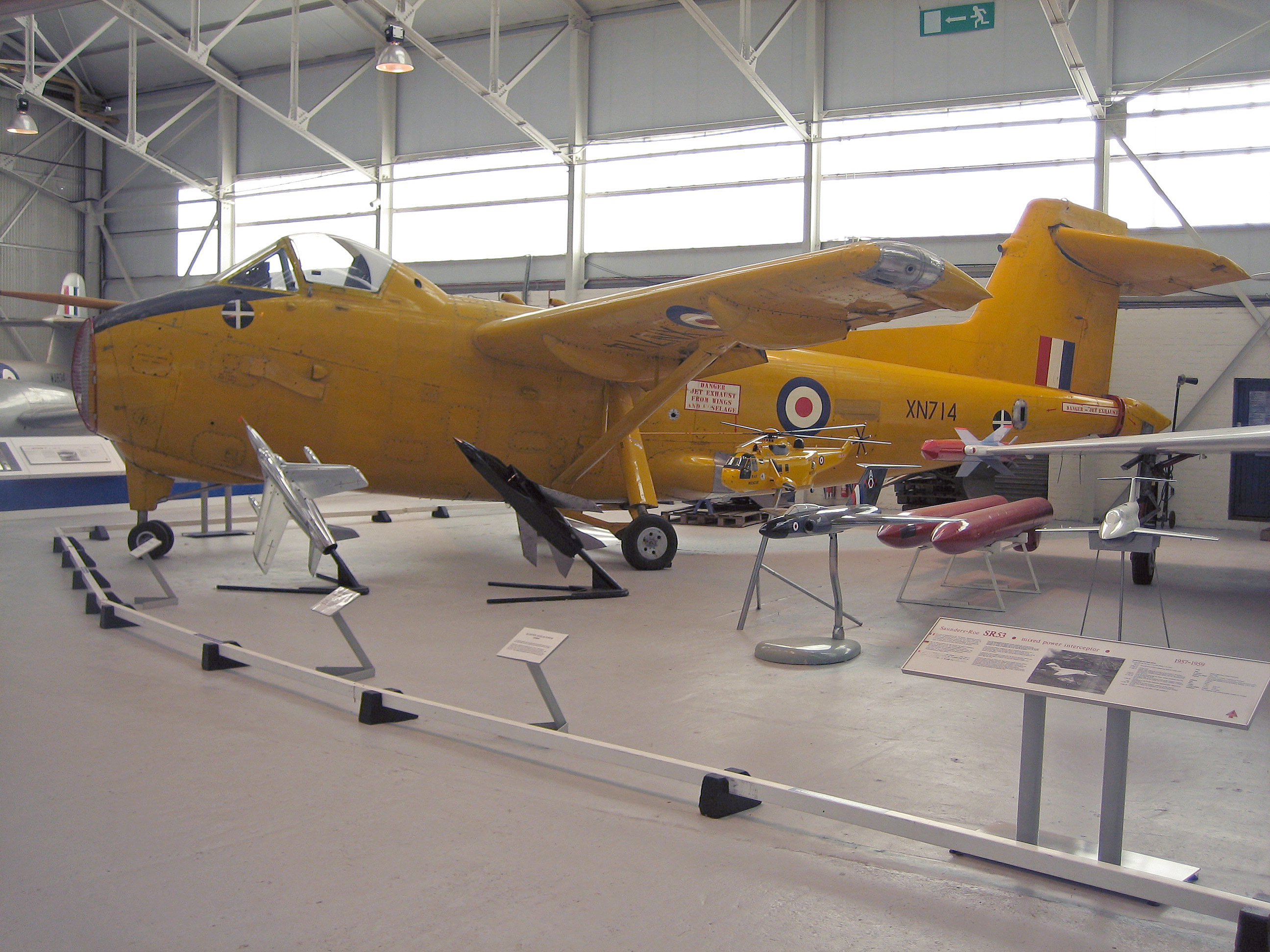- Hunting H.126
infobox Aircraft
name = H.126
type =Prototype
manufacturer =Hunting Aircraft 
caption = Hunting H126 at the RAF Museum Cosford
designer=
first flight=26 March avyear|1963
primary user=Royal Aircraft Establishment
more users=
introduction=
retired=
number built= One
status=
unit cost=
variants with their own articles=The H.126 was an English
experimental aircraft designed and built byHunting Aircraft in order to test the concept ofblown flap s, or as they were known in Britain, "jet flaps". Only one aircraft was built, being flown in a series of one-hundred test flights at theRoyal Aircraft Establishment 's Aerodynamics Flight atRAE Bedford . It was then sent to theUnited States forwind tunnel testing byNASA , and eventually made its way to the museum at RAF Cosford.Design and development
The aircraft was designed purely for test purposes, and thus lacked features such as retractable landing gear. The shoulder-level wing featured a set of
strut s, not for support but in order to provide piping for the compressed air used in the blown flaps. The rear control surfaces consisted of a fairly small triangularT-tail , similar to the one on theGloster Javelin . Thefuselage was fairly simple, similar to theHunting Jet Provost in layout, but with a smallercockpit for a single pilot. The air intake for the singleBristol-Siddeley Orpheus engine was located in the extreme nose. The jet flap system consisted of a series of sixteennozzle s arranged along the trailing edge of the wing, which were fed about half of the engine's hot exhaust gases. A smaller amount, about 10%, was also fed into small nozzles on the wing tips to provide controlthrust at low speeds. A similar system was later used on theHawker Siddeley Harrier for similar reasons. This left little power for forward thrust, and the aircraft was limited to low speeds, but the takeoff speed was a mere 32 mph (52 km/h), a speed most light aircraft would have trouble matching.Hunting was awarded the contract in 1959 to build two aircraft. The first of these, "XN714", flew on
26 March 1963 , painted overall yellow with a matt black anti-glare area on the nose in front of the cockpit. The second was never completed and did not receive a serial number. Test flights were carried out between 1963 and 1967. In 1969 it was shipped to NASA and was returned in May 1970, staying in storage until September 1972 when it was struck from the RAF records.pecifications
aircraft specifications
plane or copter?=plane
jet or prop?=jet
ref=
crew=1
capacity=
payload main=
payload alt=
length main= 50 ft 2 in
length alt= 15.29 m
span main=45 ft 4 in
span alt= 13.82 m
height main=15 ft 6 in
height alt=4.67 m
area main=
area alt=
airfoil=
empty weight main=
empty weight alt=
loaded weight main=
loaded weight alt=
useful load main=
useful load alt=
max takeoff weight main=
max takeoff weight alt=
more general=engine (jet)=
Bristol-Siddeley Orpheus BOr.3 Mk.805
type of jet=turbojet
number of jets=1
thrust main= 4,000 lbf
thrust alt= 17.83 kN
thrust original=
afterburning thrust main=
afterburning thrust alt=max speed main=
max speed alt=
cruise speed main=
cruise speed alt=
stall speed main=
stall speed alt=
never exceed speed main=
never exceed speed alt=
range main=
range alt=
ceiling main=
ceiling alt=
climb rate main=
climb rate alt=
loading main=
loading alt=
thrust/weight=
power/mass main=
power/mass alt=
more performance=
armament=
avionics=ee also
aircontent
related=similar aircraft=
sequence=
lists=
*List of experimental aircraft
see also=References
* [http://www.britishaircraft.co.uk/aircraftpage.php?ID=775 British Aircraft Directory, Hunting H.126]
* [http://www.aoxj32.dsl.pipex.com/NewFiles/BristolData.html Bristol Engine data]External links
* [http://www.rafmuseum.org.uk/cosford/collections/aircraft/hunting-h126.cfm Royal Air Force Museum - H.126]
Wikimedia Foundation. 2010.
